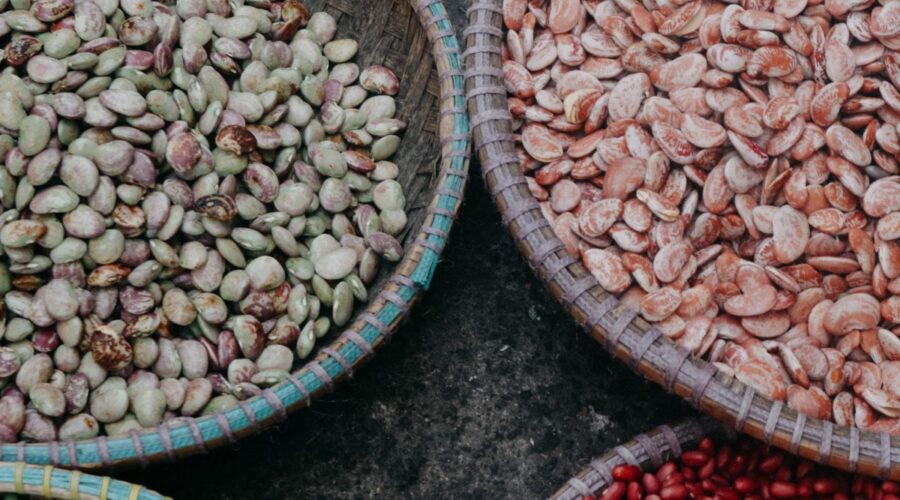When I read about the first case of Covid-19 in Afghanistan, my first thought was, “What will people eat when borders are closed and cities are locked down?” Since then, I have talked to several friends as well as my family in Afghanistan about the Covid-19 situation there and how people are responding. The overall sentiment among ordinary people has been fear, not only of the virus but also of hunger, which can be summed in what many people have told me: “Corona is bad but starvation is worse!”.
The first Covid-19 case in Afghanistan was recorded on February 24 in Herat province, when a newly deported Afghan refugee from neighboring Iran showed symptoms. Herat soon became Afghanistan’s coronavirus hotspot as more Afghans started returning from Iran where lockdowns resulted in these migrants – who are commonly hired as daily wage laborers – losing their jobs. With around 1,500 Afghans returning every day from Iran without testing or restrictions on their movement, it is possible that the virus has spread into all corners of the country. Now, there are more than 4,000 reported cases and 115 deaths. As only 15,000 people have been tested so far, the actual number of infections could be in tens of thousands. However, as the country has a very young population with over half of people under 25 years of age, mortality rates have been lower than elsewhere.
Lockdown isn’t working
Most rich countries have enforced social distancing and quarantine to prevent the virus from spreading in their communities and overloading the hospitals. Like many other poor countries, amid the panic, the Afghan government declared a lockdown without any regard for whether it fit the situation or what the consequences could be. A lockdown was in place for over a month in most parts of the country until early May when it was lifted for two weeks for Ramadan and Eid preparations.
Not only has the lockdown been ineffective in keeping people at home, but it has also exacerbated the already dire situation of poverty, lack of basic health care, and the ongoing violence in the country. Even for those who followed the government order and stayed at home, the lockdown and social distancing rules could not effectively control the spread of the virus as many people live in crowded homes. Many homes lack sufficient access to water and sanitation facilities which makes simple hygiene measures challenging to follow.
People cannot stay at home
Few people have followed the government order to stay at home, and many went out in search of work. Most people work in the informal sector and rely on daily wages and lack safety networks when work is scarce. Because most local businesses like shops and street markets were forced to close, people have lost their only sources of income. In a country where 85% of the population already lives below the poverty line, this means losing access to food and basic supplies. Corona measures could result in acute hunger (see Figure 1).
As soon as the borders closed and lockdown became effective, prices of staple foods rapidly increased. For example, the prices for flour rose by almost 20%. Other staple foods have also become more expensive. The corona pandemic has threatened food supplies for more than 14 million people with more than 7 million children at risk of starvation.

The Afghan government has launched a program to help people in need with food and other essentials, but the distribution has been marred with corruption, and it remains unclear how many families have received any aid so far. Angry with corruption in the government aid distribution, protestors are taking to the streets which in one city turned violent resulting in the death of six people.
The broken health system cannot cope
Much of the focus on suppressing the coronavirus in rich countries has been on building hospital capacity so that people are not turned away from needed medical care. In Afghanistan, however, that is not achievable. Despite improvements in Afghanistan’s health system over the last 17 years, healthcare remains inaccessible to millions of Afghans. There are only 150 hospitals including regional, district, and special military hospitals for more than 37 million people, only 3 doctors for every 10,000 people, and only 300 artificial ventilation devices for the whole country. Even the hand sanitizer distributed to hospitals by the Health Ministry turned out to be fake, with zero alcohol content. The situation is even worse in the rural areas where large, remote districts, sometimes encompassing hundreds of square kilometers and hosting dozens of villages, may be serviced by a single small community clinic staffed by one or two nurses with few medical supplies.
A crisis amid crises
Despite the corona pandemic, conflict continues in Afghanistan. In the first three months of 2020, almost 1,300 civilians were victims of violence, according to the United Nations Assistance Mission in Afghanistan. Of these, more than 530 were killed and more than 760 injured (see Figure 2). This is while the United States and the Taliban concluded their negotiations in February to make a peace deal setting the stage for the withdrawal of American troops from the country. Under this deal, the Afghan government, which was not part of the negotiations, would have to release 5,000 Taliban prisoners in exchange for 1,000 members of the Afghan security forces held by the Taliban, before both sides sit down for direct negotiations. But many people believe that as soon as the American troops leave the country, the Taliban will intensify their attacks to overthrow the government. The Taliban has rejected all calls for a ceasefire during the pandemic, making it impossible for healthcare workers to access the millions of Afghans living in areas under the Taliban’s control, arguing that the peace deal is with the US and before they negotiate a deal directly with the Afghan government, they would not agree to a ceasefire.

On top of this, the country is facing a major political crisis after the conclusion of the recent presidential election in February. Incumbent President Ashraf Ghani was declared the winner, but the result has been contested by his main rival, Abdullah Abdullah. While this is yet to be resolved, the US has cut $1 billion of aid and has threatened to slash a further $1 billion in 2021 to put pressure on the government to resolve the election dispute and establish a government that can support the US-Taliban peace deal. This will not only undermine the government’s capacity to deal with Covid-19 but also the military capability to fight the Taliban, and in a country with little tax base, this will hurt the economy badly. And it is unlikely that the deal would bring peace to the Afghan people as it further weakens the government while strengthening the Taliban encouraging them to continue their fight to take over the government.
So, what can a country like Afghanistan do?
Experts say that until a cheap and simple treatment is developed, the only way to protect people from the novel coronavirus is to prevent its spread by social distancing and lockdowns. But this puts countries like Afghanistan – which are at risk of both mass poverty from lockdowns and mass illness and deaths from the continued spread of the virus – in a dilemma. The only hope is that international humanitarian organizations will fill the vacuum in the absence of a functioning government. However, in order to really make a difference, they require massive financial support from rich countries which should set aside sufficient funds for global relief efforts alongside the stimulus packages worth trillions of dollars to safeguard their own economies.


